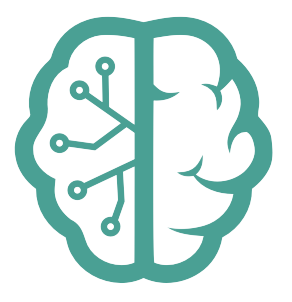THIS.GUI
[Project Status : Experimental and Under Development, Subject to Major Changes]
The module is in active development, and as such, it is subject to significant changes as we refine our approach and methodologies to best support our goals.
visit: https://neurons.me to learn more.
Installation
Install this.gui via npm:
npm install this.gui
Streamlining and automating the GUI aspect of your development, allowing you to focus on the code while this.gui takes care of the user interface. By integrating this.gui with your development workflow, it can dynamically generate and adapt user interfaces based on your code, context, and environment. Here's how this.gui could serve in various capacities:
- Automated UI Generation:
this.guiGenerate basic HTML structures for different parts of your websites or applications based on predefined templates or rules.** For instance, if you're working on a data display section,this.guicould provide a standard, yet customizable, table or chart layout based on the data type and context.
- Contextual and Environmental Adaptation:
- Detect the environment or context in which it's operating (e.g., mobile, desktop, specific user preferences) and adjust the UI accordingly. For example, switch to a mobile-friendly layout when accessed from a phone or alter themes and elements based on user settings or preferences.
- Integration with Development Tools:
- By incorporating
this.guiinto your development ecosystem, including neurons.networks and mlearning tools, you can create a cohesive workflow where GUI elements evolve based on insights and data from these tools. For example, if mlearning tools identify a pattern or preference in user interaction,this.guicould adjust the UI elements or layouts to better suit those patterns.
- By incorporating
- Code-Centric Workflow:
- With
this.gui, your primary focus remains on the backend code or logic, while the system handles the frontend. You can specify UI requirements or structures in a simple, abstracted manner, andthis.guiwould interpret these to produce concrete, functional UIs.
- With
- Learning and Optimization:
- Over time,
this.guicould learn from user interactions, feedback, and other data sources to optimize UI elements for better performance, user engagement, or aesthetics. This learning process could be automated within your development and deployment pipeline, ensuring continuous improvement without manual intervention.
- Over time,
- Rapid Prototyping and Iteration:
this.guicould facilitate rapid prototyping and iteration by quickly generating interfaces that can be tested and refined in real-time. This agility would allow for faster development cycles and the ability to experiment with different UI approaches without significant overhead.
In essence, this.gui would act as an intelligent, dynamic layer that abstracts away much of the manual work involved in UI development, allowing you to stay focused on the core logic and functionality while still benefiting from a responsive, user-friendly interface.
Neural Network Integration:
-
Data Processing and Learning: Both All.This DataStructures serve as inputs to neural network models that analyze, learn, and potentially transform these structures. The neural networks could identify inefficiencies, user experience issues, or opportunities for enhancement based on vast datasets and user interaction logs.
-
Output Generation: The neural networks could output modified or entirely new
this.DOMandthis.GUIstructures that reflect learned optimizations, adaptations to context or user preferences, or innovative design approaches. -
Continuous Improvement: As
this.DOMandthis.GUIstructures are processed and reprocessed through neural networks, they become more refined and aligned with optimal UI/UX practices, user preferences, and context-specific requirements.Application and Use Cases:
- Dynamic Interface Generation: Leveraging neural networks,
this.GUIcould dynamically generate user interfaces that are optimized for the current context, user preferences, and device capabilities. - User Experience Optimization: Neural networks could analyze
this.DOMstructures to suggest or automatically implement optimizations that enhance usability, accessibility, and user engagement. - Adaptive Interfaces: Over time, as neural networks learn from a broad spectrum of interactions and contexts, they could guide the evolution of
this.GUIto create interfaces that adapt in real-time to user needs and environmental factors.
In this conceptual framework,
this.DOMandthis.GUIare not just static descriptions or libraries but living, evolving structures that are integral to a neural network-driven process of continuous UI/UX optimization and innovation within the neurons.me ecosystem. - Dynamic Interface Generation: Leveraging neural networks,
Contribution
Contributions are welcome! To contribute to this.gui, please visit our GitHub repository.
About All.This
Modular Data Structures:
this.me - this.audio - this.text - this.wallet - this.img - this.pixel - be.this - this.DOM - this.env - this.GUI - this.be - this.video - this.atom - this.dictionaries
Each module in all.this represents a specific datastructure. These classes encapsulate the functionalities and data specific to their domain.
Utils
all.this not only aggregates these modules but also provides utilities to facilitate the integration, management, and enhancement of these data structures. For example:
The integration with cleaker ensures each module instance has a unique cryptographic identity, enhancing security and data integrity.
Neurons.me Ecosystem Glossary:
visit: Neurons.me Glossary
